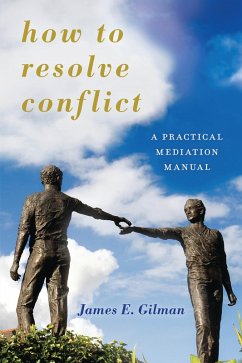A guide to the practice of mediation as a means of resolving conflict, this short how-to manual includes all the resources needed to teach and train mediators in the skills of conflict resolution. It explains the conceptual framework of conflict and peacemaking, the stages and steps of the mediation process, and the resources necessary to conduct mediation sessions, including practice through role-playing. The book is divided into three parts: Theory, Process, and Practice. Part I provides a conceptual framework for understanding conflict and mediation. It discusses the sources of conflict, the dynamics of power imbalances, how mediation counteracts them, and familiar styles for managing conflicts. Part II describes the stages of the mediation process. It begins with orientation and preparation for the mediation session before outlining each of the five stages of the mediation process along with a range of communication skills crucial to the success of each stage. Part III focuses on several familiar areas of human experience in which the practice of mediation is common, such as family and domestic mediation, business and organizational mediation, international mediation, and education. These chapters include customary forms and techniques used in resolving conflicts. The final chapter includes materials to manage and conduct mediation role-playing exercises.
Bitte wählen Sie Ihr Anliegen aus.
Rechnungen
Retourenschein anfordern
Bestellstatus
Storno









